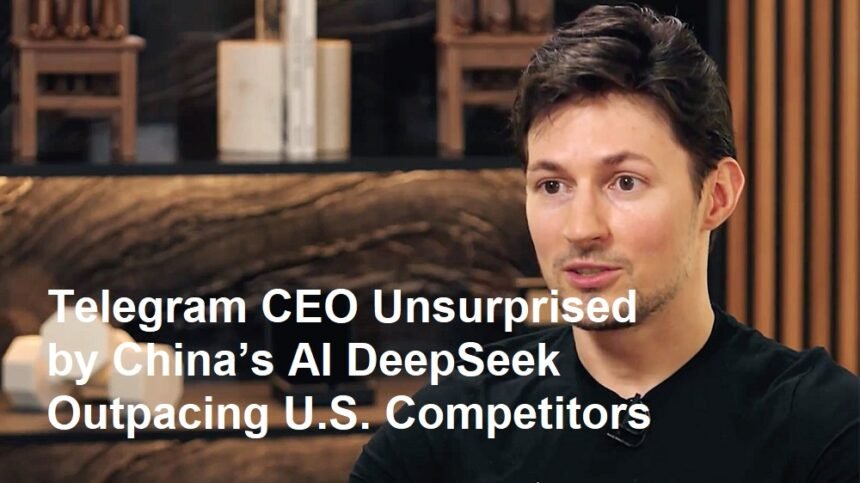Pavel Durov, the CEO of Telegram, has expressed little surprise at China’s rapid advancements in artificial intelligence (AI), particularly highlighting DeepSeek—a cutting-edge AI system developed by Chinese researchers—as a formidable competitor surpassing U.S. counterparts in key benchmarks. His remarks come amid intensifying global scrutiny of the AI race between China and the United States, with geopolitical, economic, and ethical implications at stake.
DeepSeek, developed by Chinese tech firm DeepSeek Inc., has recently gained attention for outperforming leading U.S. AI models like OpenAI’s GPT-4 and Google’s Gemini in specialized tasks such as mathematical reasoning, coding, and multilingual data processing. According to open benchmarks, DeepSeek’s architecture excels in efficiency and accuracy, attributes linked to its unique training methodologies and access to vast, diverse datasets.
China’s AI ambitions are rooted in its 2017 national strategy, the Next Generation Artificial Intelligence Development Plan, which prioritized achieving global AI leadership by 2030. This state-backed initiative has fueled investments in research, talent acquisition, and infrastructure, enabling companies like DeepSeek, Baidu, and Tencent to innovate rapidly. “China’s focus on AI isn’t just about technology—it’s a strategic imperative,” Durov noted in a recent interview.
Durov, known for his staunch advocacy of privacy and decentralized communication, argued that China’s AI progress stems from systemic advantages. “The U.S. pioneered AI, but China’s combination of state support, data abundance, and a culture of execution speed makes breakthroughs inevitable,” he said. He emphasized China’s centralized policymaking, which allows for swift resource allocation, contrasting it with the fragmented regulatory environment in the U.S.
Moreover, Durov pointed to China’s vast population—generating unparalleled datasets—as a critical edge in training robust AI models. “Data is the new oil, and China has the largest reserves,” he remarked, alluding to the country’s 1.4 billion residents, whose digital footprints feed AI algorithms.
While the U.S. remains a leader in foundational AI research, experts warn that bureaucratic hurdles and ethical debates may slow deployment. The Biden administration’s 2023 AI Executive Order aimed to bolster innovation but also imposed stringent safety regulations. Meanwhile, U.S. firms face export restrictions on advanced chips, hampering their ability to train large-scale models—a gap China has exploited by developing domestic alternatives.
“The U.S. isn’t falling behind in talent, but China’s aggressive investment is shifting the momentum,” said Dr. Helen Zhou, an AI analyst at MIT. Some U.S. companies, like OpenAI, have begun partnering with Asian tech giants to access broader markets, signaling a pragmatic approach to the competition.
Durov also raised concerns about AI ethics, noting divergent approaches between China and Western democracies. “In the U.S., debates about AI bias and transparency are front and center. In China, the focus is on utility and control,” he said. Critics argue that China’s AI advancements could amplify surveillance capabilities, while proponents highlight applications in healthcare and urban planning.
The global AI rivalry also risks bifurcating tech ecosystems, with nations adopting competing standards. “We’re heading toward a fragmented AI landscape, where interoperability becomes a challenge,” warned Rajeev Sharma, a geopolitical strategist.
As DeepSeek and similar platforms gain traction, the U.S.-China tech cold war is set to deepen. Durov predicts increased investment in AI by smaller nations and private entities, leveraging open-source frameworks to avoid over-reliance on superpowers. For Telegram, this means doubling down on encryption and user-centric AI tools that align with its privacy ethos.
“AI is a double-edged sword,” Durov concluded. “The question isn’t just who leads, but how we ensure it benefits humanity without eroding freedoms.”
The coming years will test whether the U.S. can reclaim its edge through collaboration and innovation—or if China’s strategic blueprint will redefine the future of technology.













